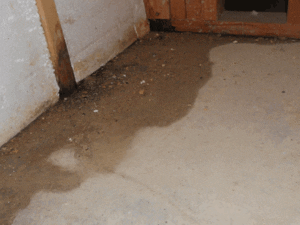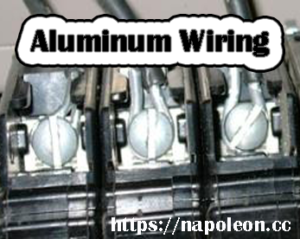Top Five Deal Breakers – By the Barrie Home Inspector
Real Estate agents like to throw around the word “Deal Breaker”, and that is because they are only focusing on their possible loss of commission. Every home has its issues and some are more serious than others. At the end of the day it depends on the “comfort level” of the purchaser with the deficiencies. Here are some of the most common reasons I have found why people will walk away from a purchase.
WET BASEMENTS – After over twenty years of inspecting home in the Barrie, Alliston and Orillia area the most common question ask is, “is there any water in the basement”. Water in a basement can come from a number of
MOULD – If a home has mould it may be very expensive to remediate, depending on severity and location. Mould is a fungus that can grow in walls, under ceilings and floors or in any place where moisture, heat and protein exists. Mould can cause a variety of health problems and some mould can develop mycotoxins which cause rashes, bleeding and other health issues. Unless mould is localized to specific leak or other minor issue it is recommended you have a professional mould inspector who also does remediation provide a quote prior to completing sale.
BUILDING PERMITS – Many homes in Barrie, Alliston and Orillia have illegal in-law apartments or basements that were not finished with a building permit. If there has been changes to the home and no permit was taken out, you as the new home owner will be liable to comply with any requirements of your local building department if they discover the modifications. Your city or municipality will require you to take out a permit and bring home up to current code requirements. This can be very costly especially if you get into buried plumbing, electrical behind walls and ceilings. Not only is there the city building inspector but also an electrical inspector and possibly a plumbing inspector. If you have added an apartment you may be contravening zoning by-laws and fire code requirements.
ASBESTOS – Asbestos in homes is typically found in vermiculite insulation and as part of heating system. There can also be asbestos in older homes in paint, drywall, plaster and flooring. Many homes built prior to the late 1960’s have old heating ducts which are still wrapped in asbestos. Even when a new heating system is installed it a rare case where the installer removed all the asbestos. I have inspected homes where the old boiler was encased in asbestos and just covered with plastic sheet and left in place as home owner did not want to incur the cost of removing it. Vermiculite insulation, particularly insulation from Libby Montana mine, can contain asbestos. It is impossible to tell from looking at it and must be sent to a laboratory for examination. Removing any significant amount of asbestos is a very expensive proposition as it is a Class 2 hazard and has to be dealt with in accordance with strict rules which apply to removal, containment and methods of disposal. Read Barrie Home Inspections articles on Asbestos
ALUMINUM WIRING – This was used during the 1960’s and 70’s due to a spike in copper prices. Aluminum and copper connection causes aluminum to corrode which then creates a loose connection with arcing and possible

Aluminum Wiring has a unique ability of wire to actually get thinner at a connection when over heated. This action is called, “Cold Creep”. When an aluminum wire arcs and develops heat the aluminum metal actually moves away from heat source. When aluminum cools it does not return to its normal state, as copper wire does. This action creates a large gap in metals which leads to more heat generated by arcing and can eventually lead to a fire.
Read the Barrie Home Inspector articles on Aluminum wiring.
Always remember CAVEAT EMPTOR – BUYER BEWARE
Inspection Areas
Alliston
Angus
Barrie
Innisfil
Orillia
Midland
Penetanguishene
Newmarket
Wasaga Beach
Certifications









